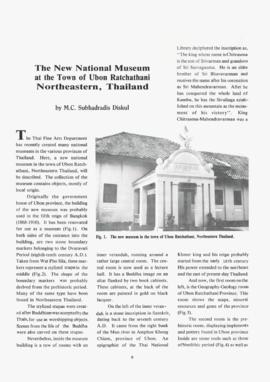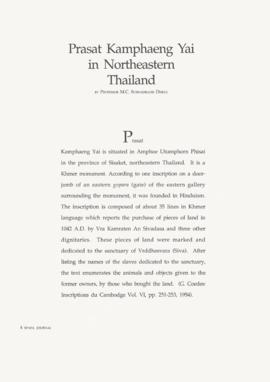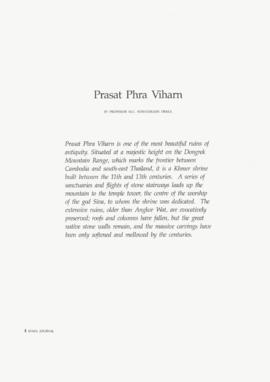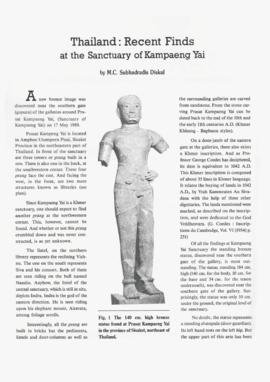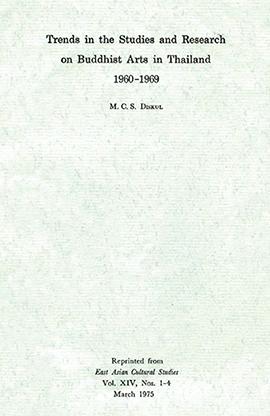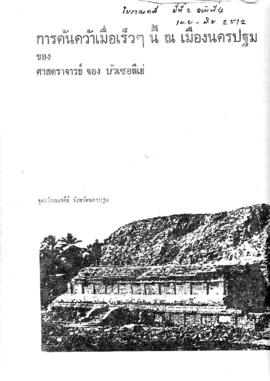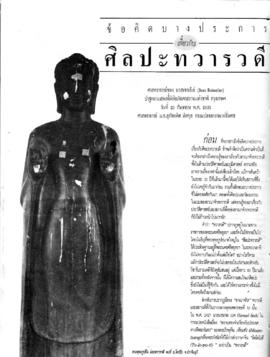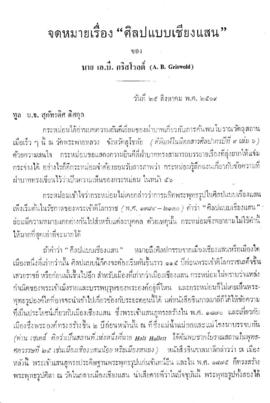The New National Museum at the Town of Ubon Ratchathani, Northeastern, Thailand
- TH Subhadradis 02 ACAR-01-111
- Item
- 1991
Part of บทความ
The Thai Fine Arts Department has created a national museum in the town of Ubon Ratchathani, Northeastern Thailand. The collection of the museum contains objects, mostly of local origin.
The museum contains six rooms. The first room is the Geography-Geology room of Ubon Ratchathani Province which shows the maps, mineral resources and gems of the province. The second room is the prehistoric room, displaying implements and pottery found in Ubon province. The third room "Dvaravati room", displaying objects pertaining to the Dvaravati period or those from contemporary epochs. The fourth room "Khmer room", displaying Khmer objects. The fifth room contains Buddha images created by Ubon Ratchathani craftsman. The sixth room displays local tradition and objects.
Though this museum is rather small, it is worthwhile visiting because of the many interesting objects displayed in an orderly manner.
ศ. ม.จ. สุภัทรดิศ ดิศกุล

